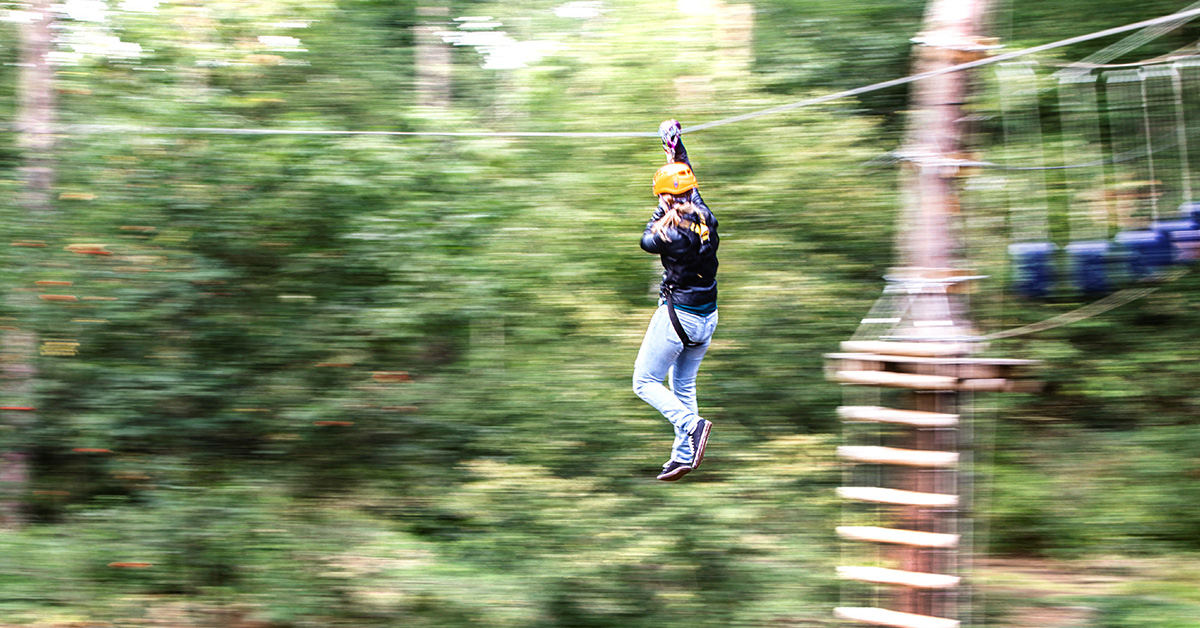
With this expert article, we’ve got you covered! The most important details pertaining to the setup and maintenance of a zipline are outlined in this article. The popular form of amusement known as a zipline, sometimes known as a flying fox or an aerial runway, allows people to experience an exhilarating ride while gliding through the air. The design of a zipline is crucial for assuring user safety and providing an exhilarating experience.
The high return on investment (ROI) that a zipwire operation may provide is one of the main advantages of doing so. Zipwires can draw a huge number of users and can be installed and maintained for relatively modest costs, which can result in big revenue. Zipwires can also be a useful addition to a hotel or adventure park, giving visitors a fun new activity and boosting foot traffic all around. Overall, adding ziplines to an adventure park or hotel may be both profitable and fun. A zipwire may offer a significant return on investment and a thrilling experience for customers with the right planning, management, and marketing.
The fundamentals of a zipline
A zipline, often referred to as a flying fox or an aerial runway, is a well-liked type of amusement that enables people to enjoy an exhilarating ride while gliding through the air. A zipline’s design is essential for ensuring safety and giving users an exhilarating experience.
The cable, the trolley, and the anchor points are the three fundamental parts of a zipline. The zipline’s main support, the cable, is often constructed out of steel or another strong synthetic material. The trolley, which is what passengers grip onto and ride on the cable, is often constructed out of metal or tough plastic. Usually composed of steel or concrete, anchor points are the places where the cable is fastened to the ground or a building.
Making sure the wire is sturdy enough to sustain the weight of riders and withstand tension, compression, and bending forces is one of the most crucial components of zipline construction. Additionally, the cable needs to be correctly tensioned to avoid sagging or stretching, the trolley should be built tough and able to handle impact and wear & tear.
Because ziplines require specific knowledge and skills to ensure correct construction, safety, and compliance with local building standards and laws, they should only be installed by professionals. Professionals are equipped with the knowledge and skills required to install and maintain equipment correctly, including choosing the best materials, calculating the ideal slope and tension, and making sure the line is securely attached. Professional installation might also shield the property owner from liability in the event of an accident. By ensuring that the zipline is put up properly and safely, a professional can assist to reduce the chance that riders will sustain injuries.
Making sure the anchor points are solid and strong enough to sustain tension and compression stresses is another crucial component of zipline design. The anchor points should be set up so as to prevent any movement or shifting while in use.
Another important consideration in zipline design is safety. Safety gear, such helmets and harnesses, should be made available to riders, along with detailed instructions on how to use it. The zipline should be built with security measures like emergency stops and braking systems.
In conclusion, creating a zipline is a difficult procedure that takes into account a variety of elements, such as guaranteeing the strength and durability of the cable, trolley, and anchor points as well as the safety of the zipline for users. A zipline can give riders an exhilarating and thrilling experience while also ensuring their safety with proper construction and upkeep.
Zipline Speed
In order to maximize the thrill and excitement of the ride, zipline speed is a crucial component of the zipline experience. Numerous variables, such as the zipline’s length and elevation, the rider’s weight, and the braking system employed, can affect the speed of a zipline.
The length of the zipline has a significant impact on the ride’s speed. Generally speaking, a longer zipline will enable a speedier ride because the rider will have more time to pick up speed. The pace of the trip is, however, also influenced by the incline of the zipline. A faster ride will be possible on a steeper inclination, while a slower ride will be possible on a shallower incline.
Another crucial element in determining the zipline’s speed is the rider’s weight. Because they have more momentum, heavier riders often reach higher speeds than lighter ones. Therefore, it’s crucial to check if the zipline can support riders of various weights.
The zipline’s braking mechanism has an impact on the ride’s speed as well. Some ziplines have a manual braking mechanism that requires the rider to pull a handle to slow down. Other ziplines employ an automatic braking system that automatically reduces the rider’s speed when the zipline comes to an end. This may have an impact on the ride’s overall speed because a manual braking system may allow the rider to stop more quickly than an electronic braking system.
It’s also crucial to keep in mind that weather conditions like wind, rain, or snow might have an impact on the speed that a rider reaches on a zipline. These elements may increase to the rider’s drag and slow them down.
In conclusion, zipline speed is a crucial component of the experience that has a big impact on how thrilling and exciting the ride is overall. The length and elevation of the zipline, the rider’s weight, and the braking system employed all have an impact on the speed of the zipline. All these elements must be taken into account while developing and running a zipline to guarantee the safety and enjoyment of the users.
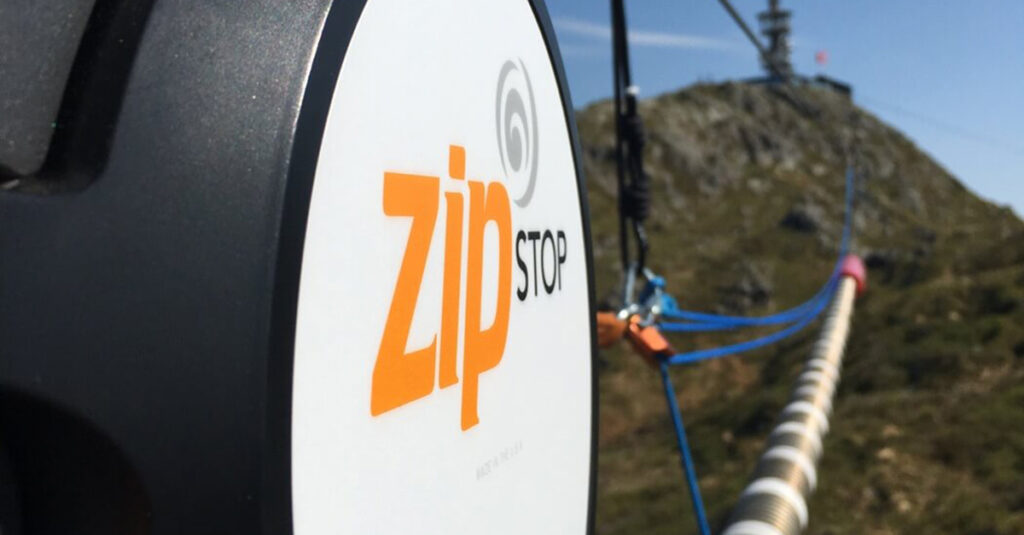
Braking a zipline
At the end of the zipline, riders can slow down and stop using the zipline brake system. On a zipline, a variety of braking mechanisms are available, each with advantages and drawbacks of their own.
The manual braking mechanism is one of the most widely used braking techniques on ziplines. The rider must physically pull a brake handle on this kind of braking device in order to slow down and come to a stop at the zipline’s conclusion. Manual braking systems are straightforward and simple to use, but in order to stop properly, a rider must have good hand-eye coordination and reaction time.
The automated braking system is another sort of braking system. Without the need for personal assistance, this kind of braking mechanism automatically slows down and stops the rider at the end of the zipline. Although automatic braking systems might be more expensive and difficult to install and operate, they are often more consistent and reliable than manual braking systems.
The dynamic braking system is a third category of braking system. This kind of braking system makes use of a device that causes the trolley to experience resistance, slowing the rider down. Although less frequently utilized, this kind of braking mechanism can give the rider a more comfortable stop.
It’s also critical to remember that the weight of the rider and the anticipated zipline speed should be considered while designing the brake mechanism. Regardless of the rider’s weight or speed, the braking mechanism must be able to safely slow down and stop them at the end of the zipline.
In addition to the braking system, it’s crucial to think about the zipline’s stopping distance, taking the rider’s speed and the braking system into account. This is crucial to make sure that riders can stop at the zipline’s conclusion safely.
The zipline brake system, which is used to slow down and halt riders at the end of the zipline, is a key safety component. The various braking systems that can be employed on a zipline include manual braking systems, automatic braking systems, and dynamic braking systems. Each form of braking system has advantages and limitations. It’s crucial to select a braking system that offers a safe stopping distance and is suitable for the anticipated speed and rider weight.
Safety on Ziplines
In order to safeguard riders from harm and accidents as they experience the excitement of the ride, zipline safety is an essential component of the zipline experience. The design and construction of the zipline, rider safety gear, and the appropriate use and maintenance of the zipline are a few of the essential elements that make up zipline safety.
A crucial component of safety is the zipline’s design and construction. The trolley, anchor points, and cable must be sturdy and long-lasting enough to sustain the weight of the riders and withstand bending, compression, and tension stresses. Safety elements like braking systems and emergency stops must be built into the zipline’s construction.
Another critical component of zipline safety is the use of rider safety equipment. Helmets, harnesses, and other safety gear should be made available to riders, and they should be shown how to use it appropriately. Additionally, riders should receive comprehensive instructions on how to use the zipline properly and what to do in an emergency.
Safety also depends on the zipline being operated and maintained properly. To make sure it remains in good working order and that all safety elements are operational, the zipline should undergo routine inspections and maintenance. The zipline operator should be trained in emergency procedures, and riders should be compelled to abide by safety laws and regulations.
It’s also crucial to take into account the overall state of the zipline location, scanning for any dangers like overgrown bushes or fallen branches that could obstruct riders or jeopardize the zipline’s safety. Operators of ziplines must also regularly train their workers in safety procedures and adhere to industry norms and laws.
Last but not least, zipline safety is an important component of the zipline experience. Rider safety equipment, appropriate operation and maintenance, adherence to industry standards and regulations, regular safety training, and proper design and construction of the zipline are all essential elements in ensuring that riders are protected from harm and accidents while experiencing the thrill of the ride. Operators of ziplines can guarantee riders’ safety while still giving them a fun and engaging experience by putting safety first.
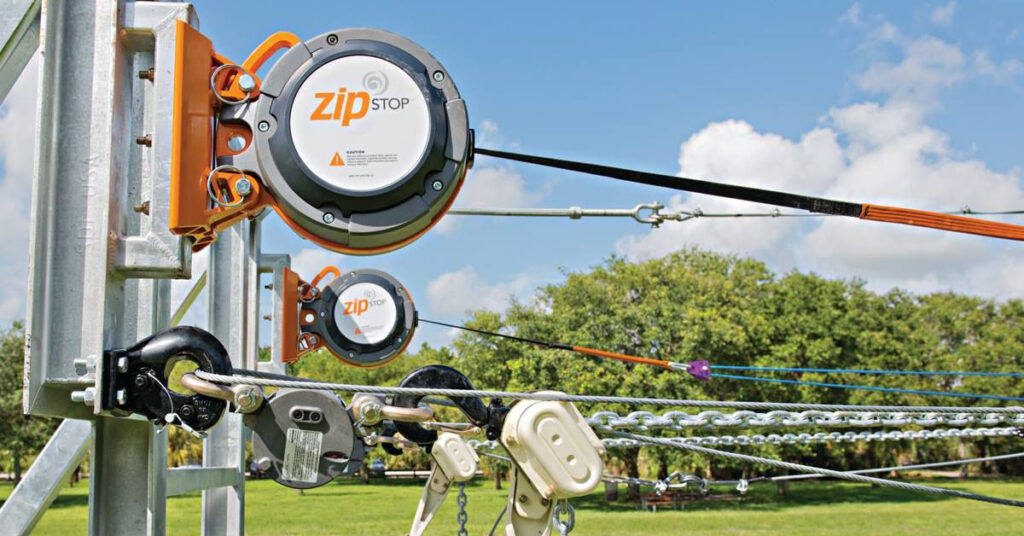
Engineering a Zipline
The process of planning and constructing a zipline that is both safe and practical for users is known as zipline engineering. Engineering principles, materials science, and a detailed comprehension of the forces that will be delivered to the zipline during use are all combined in this procedure.
Finding the zipline’s placement is the initial step in zipline engineering. This entails evaluating the terrain, choosing appropriate anchor locations, and figuring out the zipline’s overall length and slope. The zipline’s site should be selected to optimize safety and reduce the possibility of mishaps.
The cable and trolley must be designed after the zipline’s site has been chosen. The zipline’s basic structure, the cable, is often constructed out of steel or a synthetic material with high tensile strength. The trolley, which is often composed of aluminum or tough plastic material, is the object that riders use to grab onto and travel on the wire. The trolley and cable need to be sturdy enough to hold the weight of the passengers and endure bending, compression, and tension stresses.
Another crucial component of the design is the zipline’s anchor locations. These are the points, usually made of steel or concrete, where the cable is fastened to the surface or a building. The anchor points need to be created with security and resistance to tension and compression forces in mind.
A key consideration in zipline engineering is safety. Safety gear, such helmets and harnesses, should be made available to riders, along with detailed instructions on how to use it. The zipline should be built with security measures like emergency stops and braking systems.
To guarantee that the zipline is built according to the right requirements, it is crucial to employ the right installation methods and materials during the building process. To keep the zipline functional and safe for users, regular inspections and maintenance are also necessary.
In conclusion, zipline engineering is a challenging process requiring a complete understanding of the forces that will be applied to the zipline during operation in addition to engineering principles and materials science. A zipline may be designed and constructed properly, and riders can have a safe and delightful experience by making sure it is maintained and inspected on a regular basis.
Specialized Calculations
The method of calculating a zipline’s specs and required parts takes into account the weight of the riders, the zipline’s length and slope, and the anticipated forces acting on the zipline. To construct a safe and reliable zipline, a number of important calculations must be completed.
Finding the cable’s minimum breaking strength (MBS) is the initial calculation. The weight of the riders, the cable’s level of safety, and the anticipated forces on the cable are all taken into account in this computation. The minimal amount of stress that a cable can withstand before breaking is known as the MBS. To hold the weight of the riders and any additional forces that might be applied to the cable, the cable must have a high enough MBS.
Calculating the cable’s tension is a crucial additional step. The weight of the riders, the slope of the zipline, and the pressures that will be exerted on the cable during operation are all taken into account in this equation. The wire must be under enough tension to keep it from sagging or stretching, but not too much that it is damaged.
Calculating the zipline’s degree of incline, or the angle at which it is inclined from horizontal, is also necessary. This is crucial in order to guarantee that the rider will be safe, comfortable, and that the zipline won’t be too steep for them to handle.
Calculating the minimal distance between the rider and any object or structure along the zipline, including trees or buildings, is also crucial. This assessment takes into account the rider’s speed as well as their emergency response time.
Finally, it’s critical to determine the zipline’s stopping distance while taking the rider’s speed and the braking mechanism into consideration. This is crucial to make sure that riders can stop at the zipline’s conclusion safely.
The weight of the riders, the length and slope of the zipline, and the anticipated forces on the zipline are all important considerations in the process of calculating the necessary parts and specifications for a zipline. It is possible to create a zipline that is both safe and effective by carefully analyzing these criteria.
Installation of a zipline
Installation of ziplines is a difficult procedure that needs specific knowledge and experience. Ziplines should be placed by experts for a number of reasons:
- Safety: Falls and collisions are concerns associated with ziplines. Professionals are equipped with the knowledge and skills required to install and maintain the machinery in a way that makes it safe for usage. This entails picking the right location, figuring out the right slope and tension, and making sure the line is securely fastened.
- Compliance: Professional installation guarantees adherence to regional building codes and ordinances. This entails securing the required licenses and making sure the zipline complies with safety requirements.
- Liability: In the event of an accident, expert installation may offer the property owner liability protection. This is so that the zipline will be installed properly, safely, and in accordance with all applicable construction laws and regulations.
- Quality: To ensure that the zipline is strong and long-lasting, professionals have the knowledge and skills necessary to employ top-notch supplies and equipment.
Regular maintenance is part of a professional installation’s plan to keep the zipline in good shape and operationally secure. Professionals should install ziplines since they include hazards, need to adhere to laws, and have the knowledge, skills, and expertise to guarantee a high-quality, secure, and compliant installation. Professionals will also assure routine maintenance.
To ensure correct installation, safety, and adherence to local building standards and regulations, the installation procedure calls for specific knowledge and expertise.
Choosing the right location is one of the first tasks in establishing a zipline. Platforms for takeoff and landing should have ample room, and the zipline rope should have enough clearance. The location should also have good accessibility and a zipline-friendly slope.
Professionals will choose the best location after deciding on the slope and tension for the zipline. The speed at which the zipline may be used safely will depend on the slope, and the tension will make sure that the cable is sturdy and secure. The right tension is essential since an improperly tensioned cable could force the rider to abruptly stop or cause them to waver.
The zipline needs to be anchored when the slope and tension have been established. The take-off and landing platforms, as well as any additional intermediate supports, like trees or poles, are secured with the cable in order to do this. To ensure the riders’ safety, the anchors must be firmly fastened.
The installation of the wire itself comes next. The cable should be constructed from sturdy materials that can endure the pressure and weight of the riders. For the cable to be secure and stable, it must also be correctly tensioned.
To guarantee that the zipline is safe to use, testing should be done at the end. This include inspecting the anchors, tensioning the cable, and aligning the cable properly. Regular inspections of the zipline are also necessary to guarantee its continued usability and safety.
In conclusion, zipline installation is a fun and exhilarating adventure activity that people of all ages may take part in. However, it’s crucial to keep in mind that only experts should install ziplines. Professional installation guarantees the zipline is set up correctly, is secure, and complies with local construction laws and ordinances, protecting both the property owner and the users.
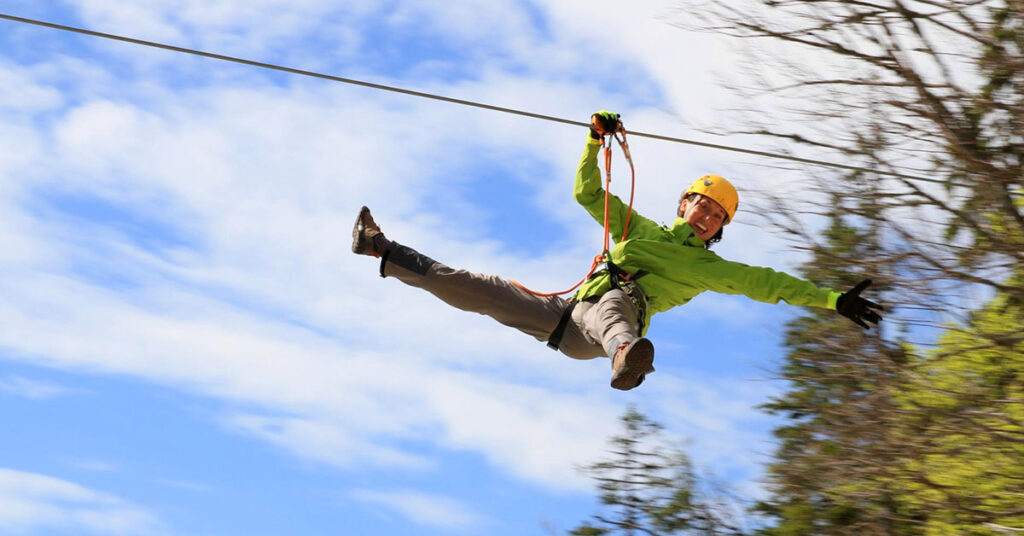
Zipline Inspections
Performing a comprehensive inspection of a zipline to make sure it complies with all safety requirements and laws and is in good operating order for users is known as a zipline inspection. Rider safety depends on routine inspections, which help find and fix any problems or flaws before they become serious.
A visual examination of the zipline, including the cable, trolley, and anchor points, is normally part of the inspection procedure. The inspector will search for any wear or damage during the visual examination, such as frayed or worn cable, cracks or corrosion on the trolley, or loose or broken anchor points.
The inspector will also examine the cable’s tension and alignment, as well as the trolley’s and the anchor points’ correct assembly. It will also be checked to see if the brake system and other safety systems are in excellent working order.
The inspector will also examine if the zipline complies with applicable laws and requirements. This entails making sure the zipline was built, maintained, and planned in accordance with the necessary standards and laws.
The inspector will also examine the quality and functionality of the rider’s accessories, including their harness, helmet, and lanyards. It’s crucial that the inspector looks over the zipline area’s general state for any dangers like overgrown vegetation or fallen branches that can obstruct riders or jeopardize the zipline’s safety.
Following the inspection, the inspector will offer a thorough report of their findings, including any problems or flaws found as well as suggestions for maintenance or repairs. The riders and regulatory organizations should have access to this report, which should be kept on file.
In conclusion, a zipline inspection is an important procedure that guarantees the functionality and safety of a zipline. Regular inspections are necessary to spot problems or defects early on and fix them, as well as to make sure the zipline complies with all safety requirements. Zipline operators may guarantee that riders have a secure and enjoyable experience by conducting thorough and routine inspections.
Upkeep of Ziplines
Regular inspections, repairs, and upkeep are all part of zipline maintenance, which keeps the equipment safe and usable for users. To keep riders safe and extend the lifespan of the zipline, routine maintenance is essential.
Regular inspections are the initial stage in zipline maintenance. A visual inspection of the zipline, including the cable, trolley, and anchor points, as well as a verification of the tension and alignment of the cable and the correct installation of the trolley and anchor points should all be part of these inspections, which should be carried out by trained and qualified personnel. To make sure they are in good functioning order, it is also advisable to inspect the brake system and other safety measures.
If any problems or flaws are found during the inspection, they need to be fixed right away. This could involve changing out worn or damaged components or making repairs to the cable, trolley, or anchor points.
It’s also critical to routinely inspect and repair the rider’s gear, including as the harness, helmet, and lanyards, to make sure that it is in good working order and meets all applicable standards and laws. It’s critical to constantly maintain the zipline area by clearing away overgrown vegetation and fallen branches that can obstruct riders or jeopardize the zipline’s safety.
To maintain smooth operation and reduce wear and tear, zipline maintenance should also regularly involve cleaning and lubricating the trolley and cable in addition to routine inspections and repairs.
Last but not least, it’s crucial to maintain accurate records of all zipline inspections, repairs, and maintenance to make sure that all necessary steps have been followed and the zipline complies with all rules and laws.
In conclusion, zipline maintenance is a critical step in ensuring the functionality and safety of a zipline. To protect riders, extend the life of the zipline, and maintain compliance with industry standards and regulations, regular inspections, repairs, and maintenance are essential. Operators can give riders a safe and entertaining experience by periodically maintaining ziplines.
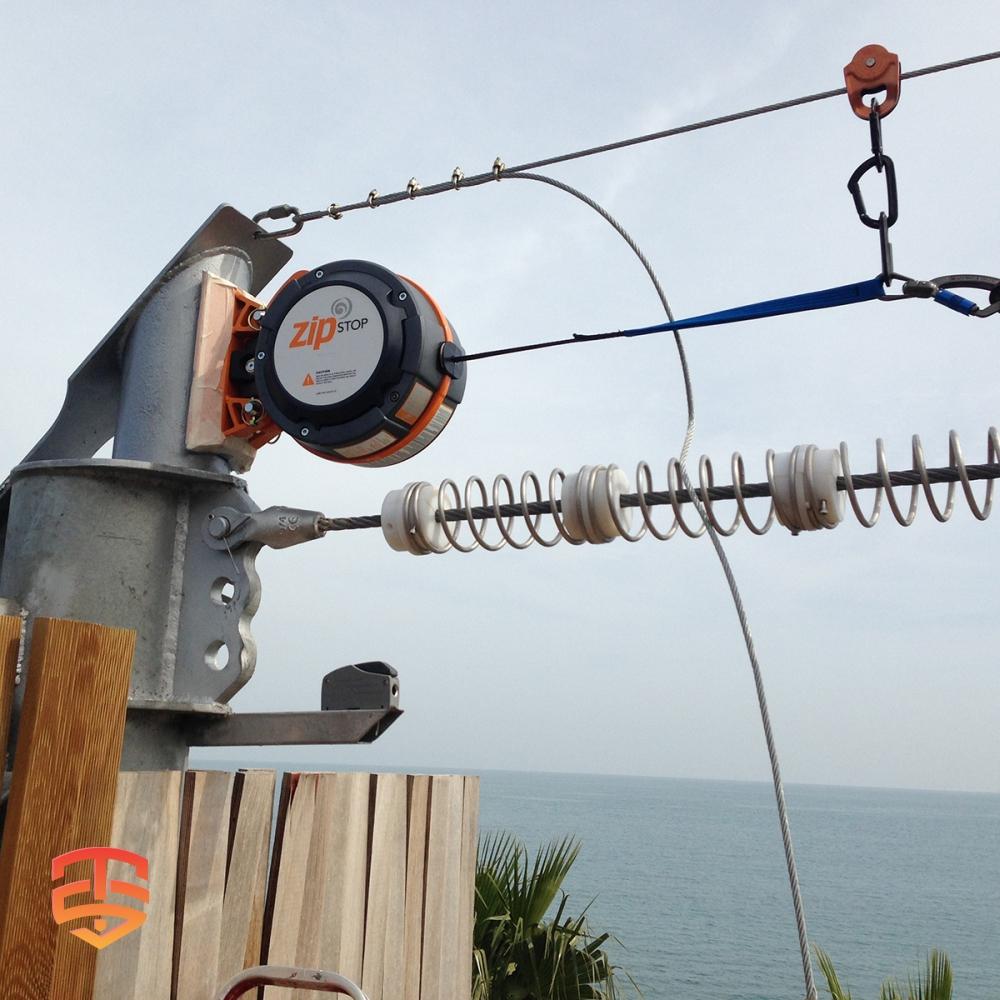
Zipline Safety Solutions
We deliver a complete professional Zipline system, from our Self-braking Magnetic Zipline Trolley to a safe Zipline Spring Brake.
We offer a full family of zip line brakes that increase throughput with a hands-free braking experience for zip line riders and operators, and a full ecosystem of zip line products to outfit the best zip line builds in the world. We use advanced technology to engineer and manufacture innovative adventure equipment for the outdoor, amusement and recreation industries.
Beyond the Basics: Unveiling Zipline Technology with Expert Analysis
Intrigued by the potential of Zipline technology? You’ve come to the right place! This article provides a solid foundation. But if you’re eager to delve deeper and gain insights from industry experts, keep reading…
- Zip Line Design: Components for a Complete System
- Considering operating and investing in a zipline?
- 9 Zipline Mistakes You Don’t Know You’re Making
- Magnetic Zipline Braking: A Revolutionary Way to Ensure Safe Rides
- Pros and Cons of Different Zip Line Brakes
- Expert Tips for Zip Line Brake Installations
- White Paper on Zipline Emergency Arrest Devices (EAD)
- The Importance of Optimizing Zip Line Design for Rider Speed
- Does your zip line need an emergency arrest device?
- The Magnetic Self-braking Zipline pulley
- Zipline Braking and landing considerations
- Why Zip Line Trolley Bearings Matter
- Whitepaper: Zipline Braking Dynamics
- Zip Line Installation: Give them the Best Ride
- How to startup a Successful Zip Line Business
-
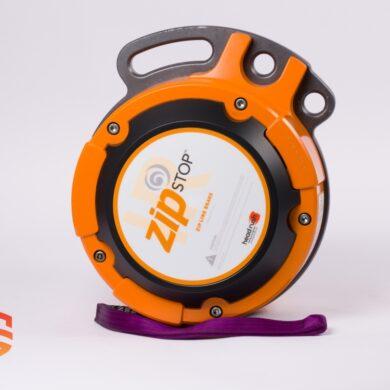 zipSTOP IR Zipline Brake | 24 – 60 kph€ 5.649,00 – € 5.799,00 Ex VAT
zipSTOP IR Zipline Brake | 24 – 60 kph€ 5.649,00 – € 5.799,00 Ex VAT -
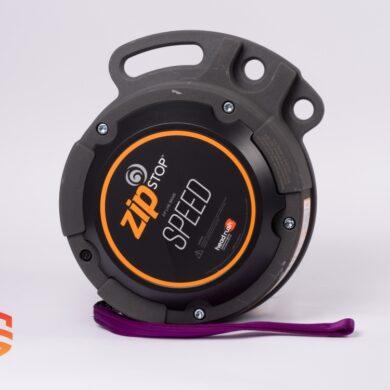 zipSTOP SPEED Zipline Brake | 50 – 72 kph€ 6.099,00 – € 6.349,00 Ex VAT
zipSTOP SPEED Zipline Brake | 50 – 72 kph€ 6.099,00 – € 6.349,00 Ex VAT -
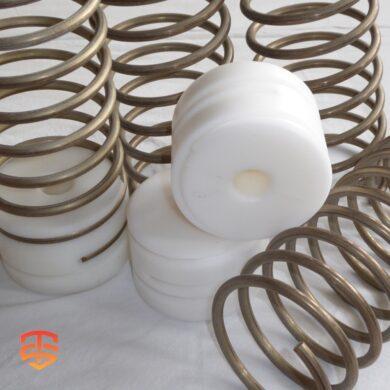 Spring Brake System | Primary & EAD zipline brake€ 98,00 Ex VAT
Spring Brake System | Primary & EAD zipline brake€ 98,00 Ex VAT







